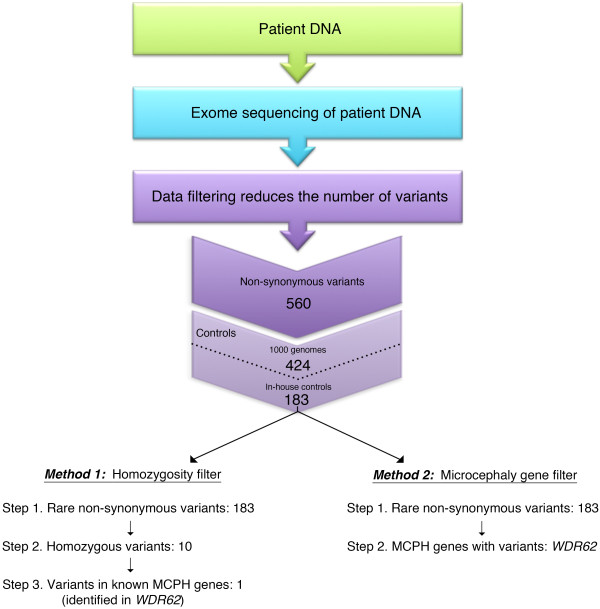Figure 2.
Exome sequencing workflow. Exome sequencing was performed on isolated DNA from Patient II-1. The data was filtered to identify non-synonymous sequence variants including frameshift and non-frameshift indels, single nucleotide variants (SNV) including stop-gain and missense SNVs, and splicing and splicing-extending variants. Variants with a frequency of less than 1% in the 1000 genomes pilot release (Nov 2010) and in 100 in-house controls were then identified. The first method of analysis focused on rare homozygous variants (Method 1) and a second, simpler approach, focused only on rare variants in disease genes known to cause microcephaly/epilepsy (Method 2). Both methods identified the homozygous mutation in WDR62 as the cause of the neurodevelopmental disorder in this family.

